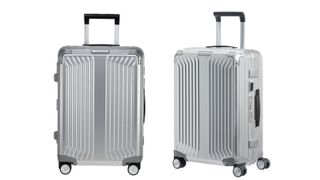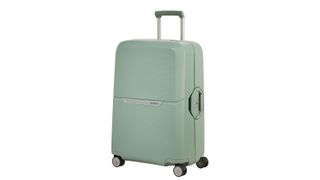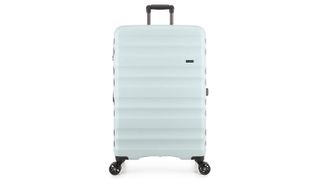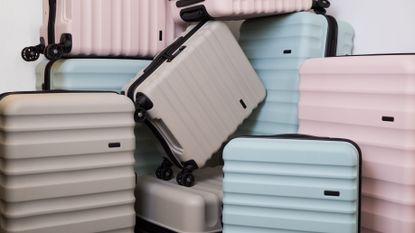How do you pack carry-on luggage? What is allowed and what isn’t? There are lots of reasons why you should try to only travel with a carry-on bag. The most obvious is to save money since airline fees for checked bags are on the increase. Another major reason to pack light is for environmental reasons. If you’re taking things you don’t need on a trip you’re increasing your carbon footprint. After all, if you weigh 75kg and your checked luggage weighs 25kg then you’re responsible for 25% more fuel burn than you thought.
Packing only a carry-on can also make your trip run more smoothly. With less time spent packing, and no check-in queues nor a frustrating wait at the carousel at your destination, you can relax more and get on with your trip.
- Best suitcase: quality luggage from Samsonite, Tumi and more
Plus, if you’ve ever had your luggage lost, delayed or damaged then you’ll know how frustrating that can be – and why for that reason alone many travellers are learning how to pack carry-on luggage correctly. Here’s how you do it:
1. Take only what you really need
Maybe you’ll go somewhere nice and need to be smart. Perhaps you’ll go swimming. Might do a hike. Think that way and you might as well take your entire wardrobe. Be ruthless and take only what you need for the specific activities you have planned or are likely to undertake, and not for the length of trip you’re about to take. If you’re headed to a beach resort for a week, obviously don’t bother with a pair of jeans or a waterproof jacket but equally insane would be to pack more than one pair of swimwear.

2. Think carefully about footwear
Indecision about shoes has ruined many an attempt to travel carry-on only. Beach sandals, walking sandals, dressy sandals, smart shoes, hiking boots… you can’t take them all. Limit yourself to one pair of shoes and wear them on the plane, but let yourself pack a pair of sandals or flip flops in your carry on.
If you do insist on taking an extra pair of shoes, stuff them full of socks and underwear to maximise the space they take up. Either way, always wear the heaviest, bulkiest pair on the plane even if they make you look ridiculous.
3. Invest in gear designed for people like you
A smart way to save space is to spend some money on a capsule wardrobe and other accessories that are designed for the job. A good example is merino wool t-shirts, which can be worn for several days without getting smelly. They also dry in a few hours, so can help you develop a ‘wash and wear’ approach to packing light.
If you need shorts and trousers consider packing some convertible hiking trousers with zip-off legs. A collapsible daypack can be used as your tote on a plane and as a daypack for taking on a hike.

4. Know the rules
What is allowed in a carry-on bag? The most important thing to remember is that your carry-on bag can only contain liquids – including aerosols and gels – if they’re in 100ml/3.4 ounce bottles or tubes. So don’t bother bringing a 500ml shower gel container even if there’s only a bit left.
Liquids don’t just refer to toiletries; wine, spirits, jams and Marmite are all commonly confiscated (as are nail scissors, multitools, pocket knives and furry handcuffs!)
Hand sanitiser isn’t an exception, so keep them to a maximum of 100ml, too. Check the complete list of hand luggage restrictions at UK airports, but bear in mind that there is one advantage to packing carry-on that’s often overlooked; you can carry any electronics and that includes portable batteries. In fact, it’s illegal to check-in portable batteries.
Read T3's guide to the most popular airline's baggage allowance: luggage limits, excess charges, and how to avoid them.
5. Keep your in-flight essentials handy
If you’re going to be on the plane for a decent length of time then you're probably going to want access to your noise-cancelling headphones, a Kindle, a tablet and/or a laptop. Oh, and a portable battery, a USB cable for topping up your devices and a travel camera or action camera.
Whatever you think you might need during a journey (not forgetting your travel pillow, eye mask and water bottle) pack it near the top of your luggage – preferably in a separate front pocket – so that it's easily accessible.
If you’d rather have your electronics and in-flight entertainment with you at the seat – which is advisable if you have a window seat – consider taking a small canvas shoulder tote, or even a simple plastic bag from the supermarket. That way, you can prepare for your flight while at the gate and stroll on to the plane hassle-free, inserting your carry-on luggage into the overhead locker and sitting down with the stuff you need.

6. Know the perfect size for hand luggage
If your carry-on luggage is too big and/or too heavy then you may be forced to check your bag at the boarding gate. That means an expensive checked bag fee. Trouble is, all airlines give you different weight and size restrictions.
You should always check with your airline before packing, but the standard carry-on luggage size is about 56x35x23cm/22x14x9 inches, which includes the handle and the wheels. However, for Easyjet it’s now 45x36x20cm as standard and 56x45x25 cm if you’ve booked an ‘Up front’ or ‘Extra legroom’ seat. For Ryanair it’s 40x20x25cm for a personal item, such as a handbag or laptop bag; everything else costs extra.
7. Find the perfect carry-on luggage
Backpack or suitcase? Once you’ve checked the websites of the airlines with which you most often fly, find the right carry on bag for you. Options include:
- Travel backpack or hiking backpack (look for hip belts, rain covers and wheels)
- Hard-shell or soft-sided wheeled suitcase (go for 4 wheels for maximum manoeuvrability)
It’s also worth looking inside before you buy. Some will have dedicated pockets for a laptop and/or tablet. Consider the interior’s organiser pockets; some have a ‘wet pocket’ that can double as a wash bag.

8. Pack everything tightly and don’t waste space
Packing cubes? Don’t bother. All they do is add extra weight to an already squeezed compartment. Instead, roll your clothes tightly and stack them around the edge of your suitcase, filling the centre with your accessories and other items. If you’re packing a bulky fleece, down jacket or sleeping bag, use compression straps to reduce their size.



